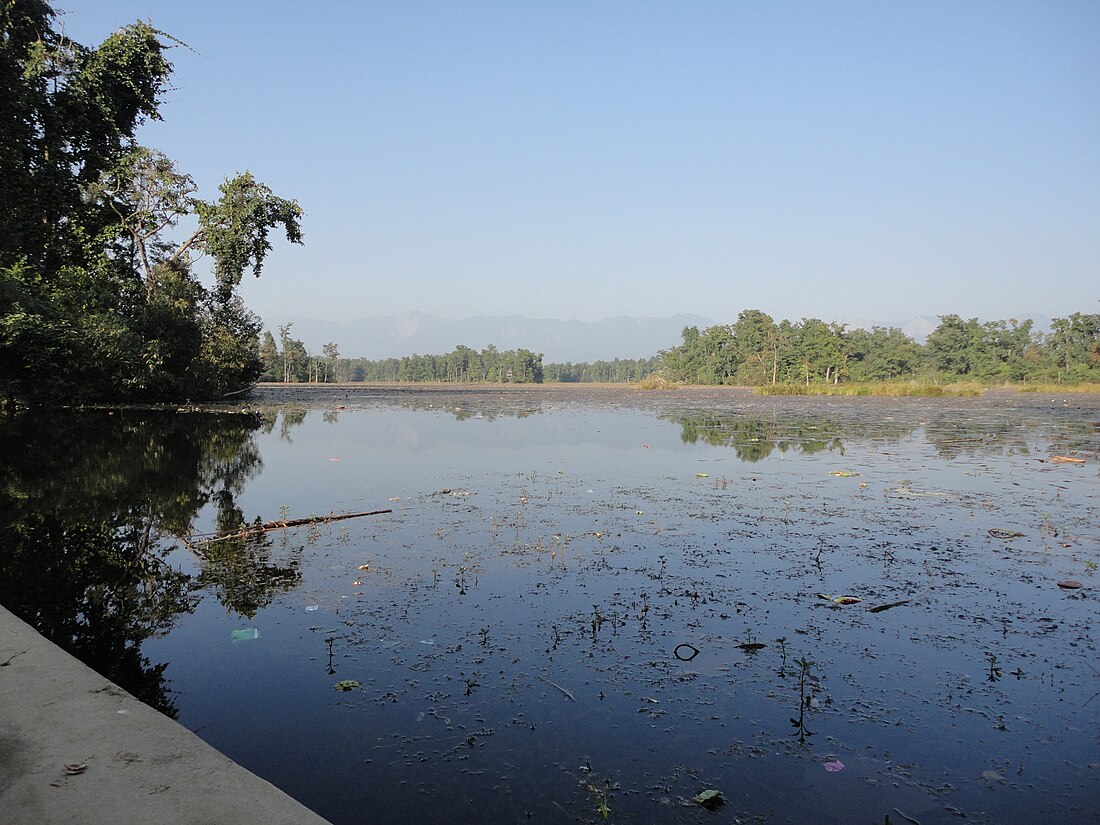Top Qs
Timeline
Chat
Perspective
Kailali District
District in Sudurpashchim Province, Nepal From Wikipedia, the free encyclopedia
Remove ads
Kailali District (Nepali: कैलाली जिल्लाⓘ), a part of Sudurpashchim Province in Terai plain, is one of the seventy-seven districts of Nepal. The district, with Dhangadhi as its district headquarters, covers an area of 3,235 square kilometres (1,249 sq mi) and has a population of 911,155 (2021 census) and (775,709 in 2011 census), (616,697 in 2001 census).
This article has multiple issues. Please help improve it or discuss these issues on the talk page. (Learn how and when to remove these messages)
|
Before the reunification of Nepal by Gorkha King Prithivi Narayan Shah, this district was part of the Doti Kingdom. Nepal lost it to the East India Company after the Anglo-Nepalese war (1814-1816) between the then Kingdom of Nepal and the East India Company followed by territorial concessions under the Sugauli Treaty. Later on after the treaty of 1860, Nepal recovered this land along with Kanchanpur, Banke and Bardiya.
Remove ads
Geography and climate
Demographics
Summarize
Perspective
At the time of the 2021 Nepal census, Kailali District had a population of 904,666. 7.77% of the population is under 5 years of age. It has a literacy rate of 77.61% and a sex ratio of 1087 females per 1000 males. 682,430 (75.43%) lived in municipalities.[3]
Khas people make up a majority of the population with 55% of the population. Tharus and Rana Tharus are the largest minority (and largest single community) with 38% of the population. Hill Janjatis, mainly Magars, are 5% of the population.[4]
At the time of the 2021 census, 36.47% of the population spoke Nepali, 35.86% Tharu, 14.16% Doteli, 4.33% Achhami, 2.27% Rana Tharu, 1.15% Magar and 0.90% Bajhangi as their first language.[5] In 2011, 27.3% of the population spoke Nepali as their first language.[6]
Remove ads
Administration
The district consists of 13 Local Levels, of which one is a sub-metropolitan city, six are urban municipalities and six are rural municipalities. These are as follows:[8]
- Dhangadhi Sub-Metropolitan City
- Lamki Chuha Municipality
- Tikapur Municipality
- Ghodaghodi Municipality
- Bhajani Municipality
- Godawari Municipality
- Gauriganga Municipality
- Janaki Rural Municipality
- Bardagoriya Rural Municipality
- Mohanyal Rural Municipality
- Kailari Rural Municipality
- Joshipur Rural Municipality
- Chure Rural Municipality
See also
References
External links
Wikiwand - on
Seamless Wikipedia browsing. On steroids.
Remove ads


